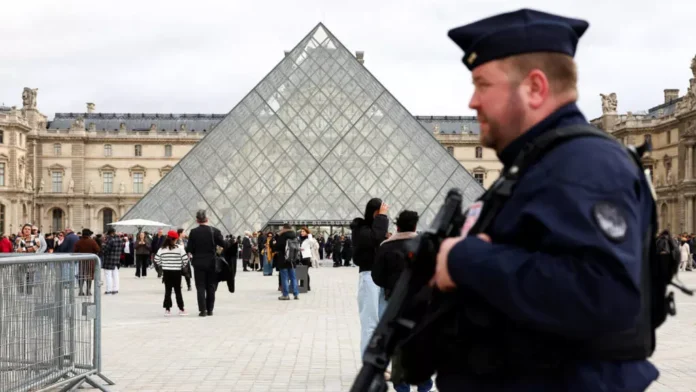
The Louvre Museum is preparing for a major overhaul of its security infrastructure following last month’s dramatic robbery that saw thieves escape with €88 million worth of crown jewels in under eight minutes. Museum director Laurence des Cars confirmed the upgrades on Wednesday, calling the incident a turning point for the world-famous institution.
Speaking before the Committee of Cultural Affairs of the National Assembly, des Cars said the new measures will include the installation of around 100 new surveillance cameras by the end of next year. Anti-intrusion systems, designed to prevent unauthorized individuals from approaching the museum’s buildings, will begin installation within two weeks.
“These are decisive steps to ensure complete protection of the museum’s surroundings,” she said, noting that security reinforcement has become a central priority since the shocking theft. The heist, carried out on October 19, stunned France and the international art community.
Using a freight lift to gain access, the thieves forced their way through a window into the Apollo Gallery and used disc cutters intended for concrete to slice into the display cases. Despite the speed and precision of the operation, des Cars revealed that the display cases held up far better than expected.
“Videos show how difficult it was for the thieves,” she explained. “The cases did not break apart. Their resistance was remarkable.” However, the break-in also exposed unanticipated vulnerabilities. The display cases, replaced in 2019, had been designed mainly to withstand internal attacks involving weapons—not external assault using industrial tools.
Following the incident, France’s highest audit court sharply criticised the Louvre’s security readiness, calling the robbery a “deafening wake-up call.” The museum has since launched more than 20 emergency measures, including the creation of a new “security coordinator” position, which is currently open for applications.
Des Cars emphasised that these improvements are part of a broader long-term vision. The decade-long “Louvre New Renaissance” plan aims to modernise the museum’s aging infrastructure, reduce overcrowding, and ultimately provide the Mona Lisa with her own dedicated gallery by 2031. The initiative carries an estimated budget of up to €800 million.
The Louvre, which has struggled with overwhelming visitor numbers in recent years, has already limited daily admissions to 30,000 in an effort to ease pressure on its facilities. The heist has now added urgency to the museum’s modernisation drive.
“After the shock, after the emotion, after the assessment, it’s time for action,” des Cars said. She assured lawmakers that the museum is moving swiftly to close security gaps and restore public confidence.
As the investigation into the theft continues, the Louvre’s sweeping upgrades signal its commitment to protecting both its priceless collections and the millions of visitors who walk its halls every year.